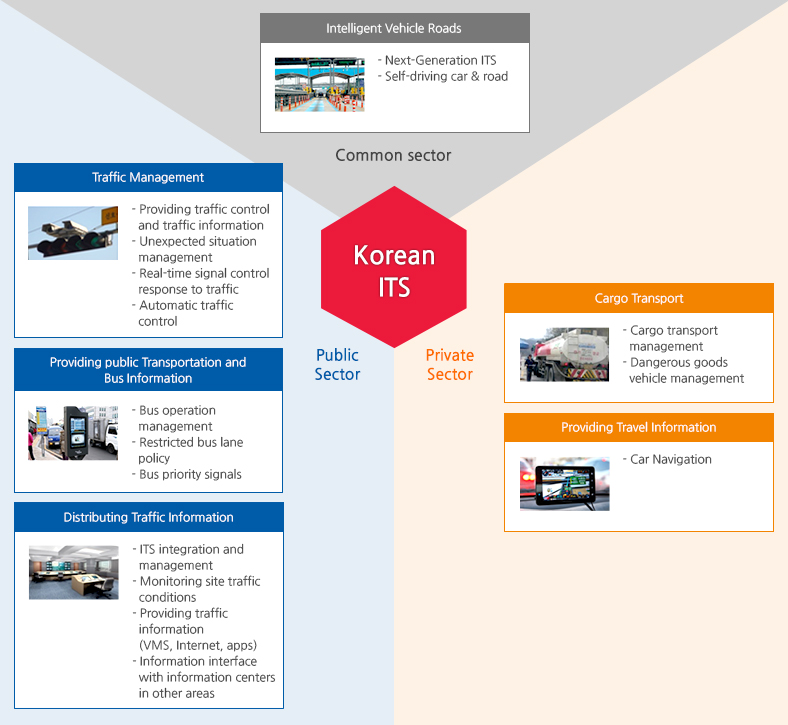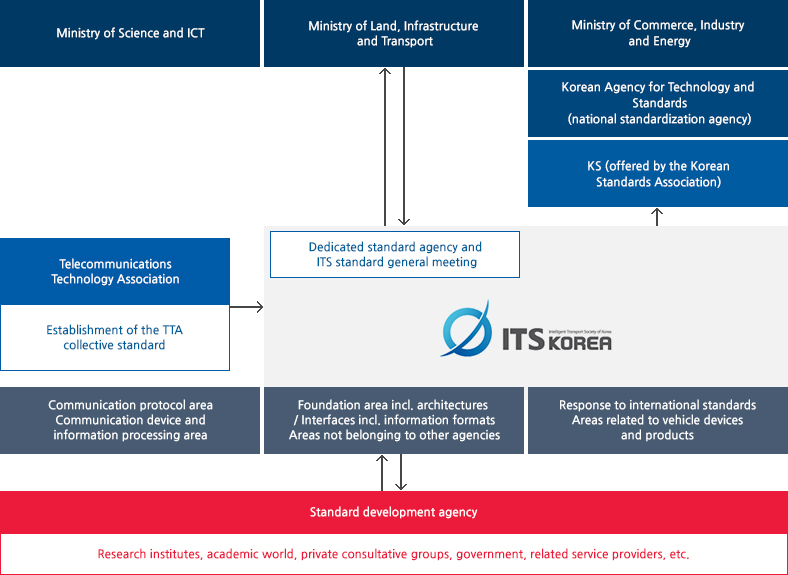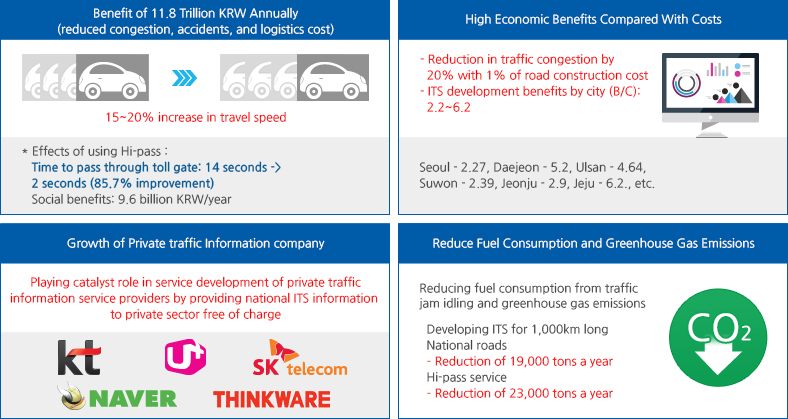ITS ARCHITECTURE Introduces ITS
ITS architecture
Concept of the ITS architecture
The ITS architecture is an outline at the national level that must be followed by the business operator in order to secure the efficient implementation, interoperability, and compatibility of the ITS service.
Necessity of the national ITS architectureIf many related parties introduce necessary services independently, it can result in deterioration of system development and operation efficiency and a decrease in interoperability. Thus, a national ITS architecture is needed that presents an overall framework for an intelligent transport system at the nation level.
Roles of the national ITS architecture
The ITS in Korea is composed of 6 services.

ITS standard
Background and purpose of standard (technical standard) establishment

Domestic standardization implementation system

National Transport System Efficiency Act - Specifying binding force of compliance with technical standards
| Item | Existing stipulation | Revised stipulation | |||||||||||||||||
|---|---|---|---|---|---|---|---|---|---|---|---|---|---|---|---|---|---|---|---|
| Binding force of standard compliance |
Stipulates standard compliance |
|
|||||||||||||||||
| Confirming standard compliance |
Verifies standard application in accordance with “ITS business tips” |
|
|||||||||||||||||
| Designating dedicated standardization agency |
Confirms standard tendencies and develops/distributes the standard |
|
|||||||||||||||||
| Introduction of certification system |
|
||||||||||||||||||
Present status of ITS technical standard establishment
ITS technical standard
| Enactment/ Announcement |
Name of technical standard |
|---|---|
| No. 2016-206 | Technical standard I of basic traffic information exchange |
| No. 2016-186 | Technical standard of public transportation (bus) information exchange |
| No. 2016-207 | Technical standard II of basic traffic information exchange |
| No. 2013-251 | Technical standard of ETCS information exchange using DSRC (between road side and terminal) |
| No. 2016-208 | Technical standard IV of basic traffic information exchange |
Guidelines and tips
| Enactment/ Announcement |
Name of technical standard |
|---|---|
| No. 2013-253 | Revised guidelines for ITS standard node link development management (2004) |
| No. 2013-254 | Revised standard for ITS standard node link development (2007) |
| No. 2013-252 | Revised tips for base information creation and management of bus information system (2007) |
| No. 2013-256 | Revised methods for terminal certification policy implementation of electronic toll collection system (2007) |
Development effects and achievements
Strengthening traffic logistics competitiveness and reducing social costs
